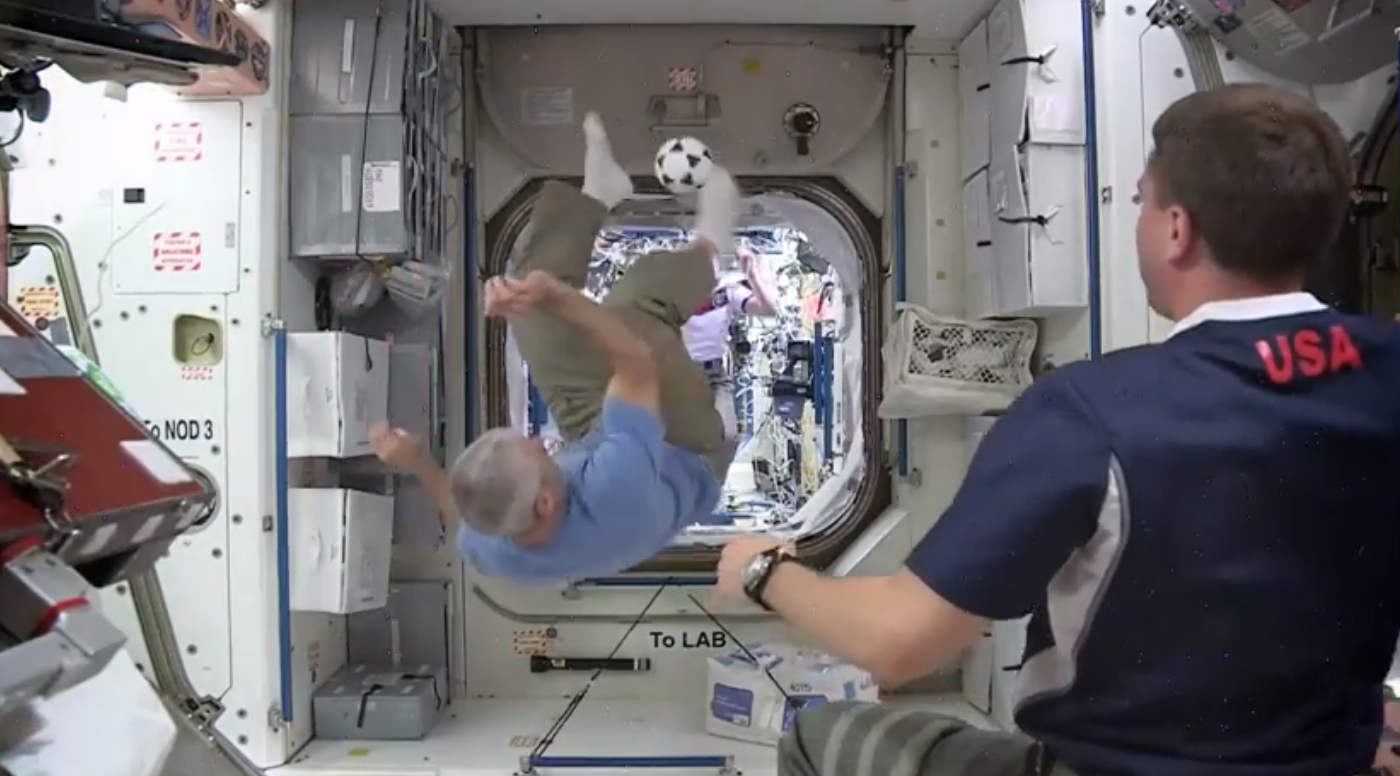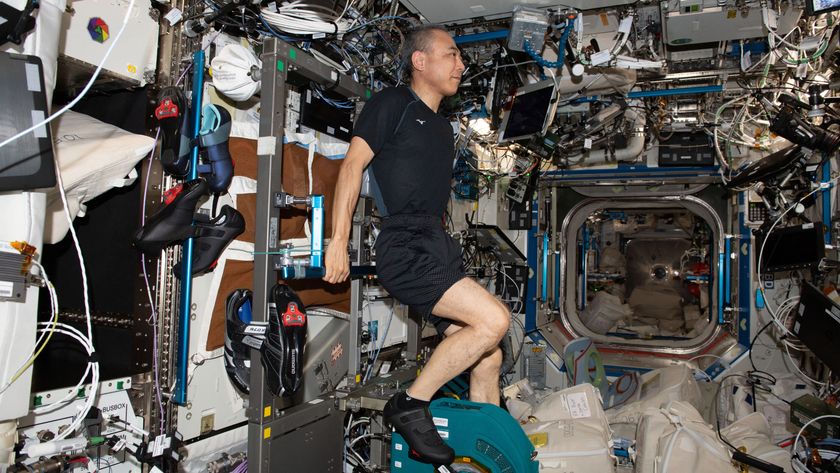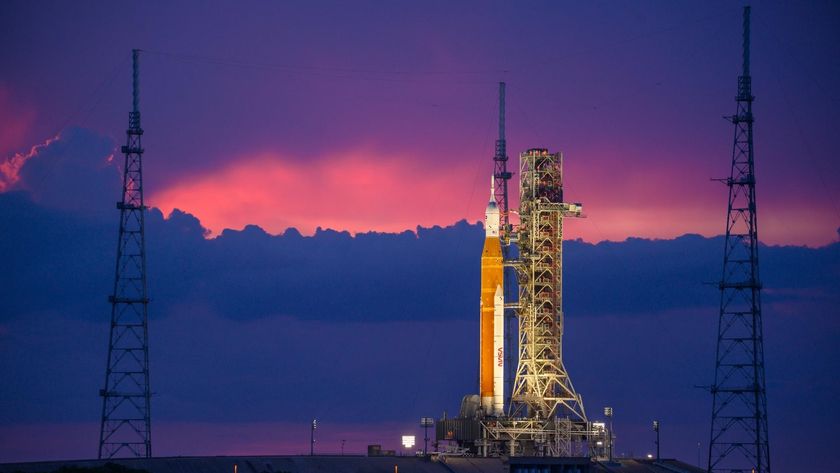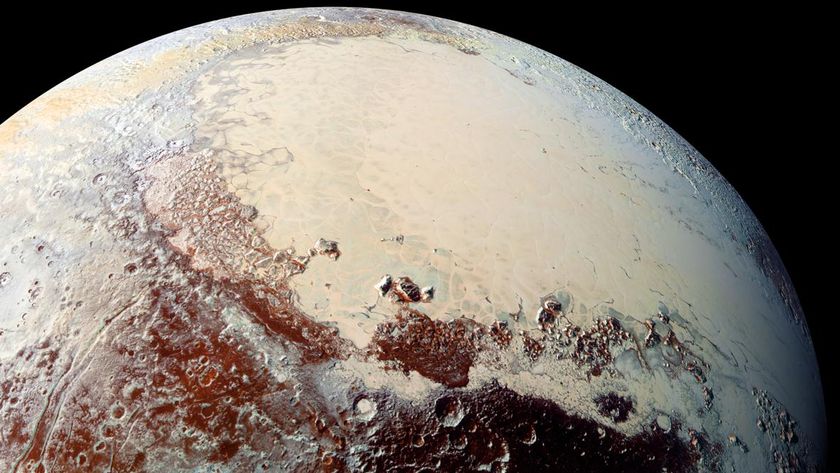
Astronauts aboard the International Space Station have staged a zero-gravity preview of Thursday's (June 26) big World Cup match between the United States and Germany.
NASA's Steve Swanson and Reid Wiseman and European Space Agency astronaut Alexander Gerst, who hails from Germany, showed off their moves in a soccer exhibition aboard the orbiting lab recently. A NASA video released today (June 25) shows the trio performing acrobatic bicycle kicks, headers and — as players tend to do here on terra firma — celebrating riotously after scoring goals.
NASA's humanoid robot Robonaut 2, which is designed to help astronauts perform chores aboard the space station, even gets into the spirit, waving its arms this way and that.
The weightless action presages a pivotal World Cup game on Thursday in Brazil featuring the two teams currently atop the tournament's so-called "Group of Death."
The winner will win the group and move on to the single-elimination "knockout stage" of the World Cup, while the loser may go home, depending on what happens in Thursday's game between Ghana and Portugal, the other two teams in the group. (Two teams from the group will advance. If the U.S. and Germany tie, they both will move on to the next stage.)
Swanson, Wiseman and Gerst are apparently pretty into the World Cup. The three spaceflyers also played microgravity soccer in another video that NASA posted on June 11, the day before the tournament — which is held once every four years — kicked off.
"We want to wish all the teams and fans on the ground and in Brazil a great World Cup," Gerst said in that video. "Have fun and have peaceful games. May the best win."
Get the Space.com Newsletter
Breaking space news, the latest updates on rocket launches, skywatching events and more!
The three astronauts make up half of the space station's current Expedition 40. The other three crewmembers are Russian cosmonauts Alexander Skvortsov, Oleg Artemyev and Maxim Suraev.
The $100 billion International Space Station is a collaboration involving five different space agencies and 15 countries. Construction on the immense structure began in 1998, and it has been continuously occupied by rotating crews since November 2000.
Follow Mike Wall on Twitter @michaeldwall and Google+. Follow us @Spacedotcom, Facebook or Google+. Originally published on Space.com.
Join our Space Forums to keep talking space on the latest missions, night sky and more! And if you have a news tip, correction or comment, let us know at: community@space.com.

Michael Wall is a Senior Space Writer with Space.com and joined the team in 2010. He primarily covers exoplanets, spaceflight and military space, but has been known to dabble in the space art beat. His book about the search for alien life, "Out There," was published on Nov. 13, 2018. Before becoming a science writer, Michael worked as a herpetologist and wildlife biologist. He has a Ph.D. in evolutionary biology from the University of Sydney, Australia, a bachelor's degree from the University of Arizona, and a graduate certificate in science writing from the University of California, Santa Cruz. To find out what his latest project is, you can follow Michael on Twitter.
Most Popular





